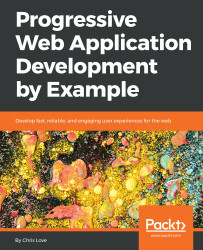This white paper explores the powerful combination of Angular and Progressive Web App (PWA) development, showcasing how these technologies can revolutionize user experiences and enhance business outcomes.
Unleashing the Power of Angular and Progressive Web Apps: A Synergistic Approach
This white paper explores the powerful combination of Angular and Progressive Web App (PWA) development, showcasing how these technologies can revolutionize user experiences and enhance business outcomes.
1. Introduction
Today's users demand seamless, engaging, and performant web experiences. Angular, a powerful JavaScript framework, provides a robust foundation for building dynamic and scalable front-end applications. PWAs, on the other hand, leverage modern web technologies to deliver app-like experiences within a web browser. By combining these two forces, developers can create applications that are:
- Fast and Responsive: PWAs deliver lightning-fast loading times and smooth interactions, even on low-end devices and in areas with limited connectivity.
- Engaging: PWA features like push notifications and offline functionality foster deeper user engagement and loyalty.
- Reliable: PWAs work consistently across devices and network conditions, providing a consistent user experience.
- Discoverable: PWAs can be easily discovered and installed on the user's home screen, making them readily accessible.
2. Angular: A Foundation for Robust Web Applications
Angular, backed by Google, offers a comprehensive suite of features for building complex web applications:
- Component-Based Architecture: Angular promotes a modular approach, making code more maintainable, reusable, and testable.
- Two-Way Data Binding: Simplifies data synchronization between the model and the view, reducing boilerplate code and improving developer productivity.
- Dependency Injection: Facilitates better code organization, testability, and maintainability by managing dependencies effectively.
- Strong Community and Ecosystem: A vast community and a rich ecosystem of libraries, tools, and resources provide ample support and accelerate development.
3. Progressive Web Apps: Delivering App-Like Experiences
PWAs leverage the following key technologies to deliver app-like experiences:
- Service Workers: Enable offline functionality, push notifications, and background sync, enhancing user engagement and reliability.
- App Manifest: Allows developers to define application metadata, such as icons, display modes, and theme color, providing a more native-like experience.
- Web App Manifest: Enables users to install the PWA on their home screen, making it easily accessible.
4. Synergistic Benefits of Angular and PWA
By combining Angular with PWA technologies, developers can achieve the following:
- Enhanced Performance: Angular's efficient rendering engine, combined with PWA optimizations like service workers and caching, results in significantly faster loading times and smoother user interactions.
- Improved User Experience: PWAs offer a seamless and engaging experience with features like push notifications, offline functionality, and home screen installation.
- Increased User Engagement: Push notifications and offline access keep users connected and engaged with the application, even when they are not actively using it.
- Improved Business Outcomes: Enhanced user experience, increased engagement, and improved discoverability can lead to higher user retention, improved conversion rates, and increased revenue.
5. Use Cases
- E-commerce: PWAs can deliver a fast and reliable shopping experience, even with poor network connectivity. Features like offline browsing and push notifications can encourage repeat purchases and increase customer loyalty. (Example: AliExpress, Flipkart)
- Social Media: PWAs can provide a seamless and engaging social media experience with features like push notifications for new messages and offline access to content. (Example: Twitter Lite, Instagram)
- News and Publishing: PWAs can deliver news articles quickly and reliably, even in areas with limited connectivity. Offline reading capabilities and push notifications for breaking news enhance user engagement. (Example: The Washington Post, BBC News)
- Travel and Hospitality: PWAs can provide a convenient and informative travel experience with features like offline maps, booking confirmations, and real-time updates. (Example: Booking.com, Expedia)
- Education: PWAs can deliver interactive and engaging educational content, even in areas with limited internet access. Offline access to learning materials and personalized learning experiences can improve student outcomes. (Example: Khan Academy, Duolingo)
6. Implementing Angular PWAs
- Choose the Right Angular Version: Ensure you are using the latest version of Angular for the best performance and access to the latest features.
- Leverage Angular CLI: Utilize the Angular CLI to scaffold projects, generate components, and manage dependencies efficiently.
- Implement Service Workers: Register and configure service workers to enable offline functionality, push notifications, and background sync.
- Optimize for Performance: Implement caching strategies, lazy loading, and other performance optimization techniques to improve page load times and overall application performance.
- Test Thoroughly: Conduct thorough testing on various devices and network conditions to ensure a consistent and reliable user experience.
7. Conclusion
By combining the power of Angular with the innovative capabilities of PWAs, developers can create exceptional web experiences that are fast, engaging, and reliable. This synergistic approach unlocks new possibilities for businesses and empowers users with unprecedented access to information and services. As web technologies continue to evolve, the combination of Angular and PWAs will play an increasingly crucial role in shaping the future of the web.
References:
- Angular Documentation: https://developer.mozilla.org/en-US/docs/Web/Progressive_web_apps1https://www.packtpub.com/en-us
Disclaimer: This white paper provides general information and should not be considered professional advice.
Note: This white paper provides a comprehensive overview of the topic. You can further enhance it by adding specific code examples, case studies, and visual aids.
